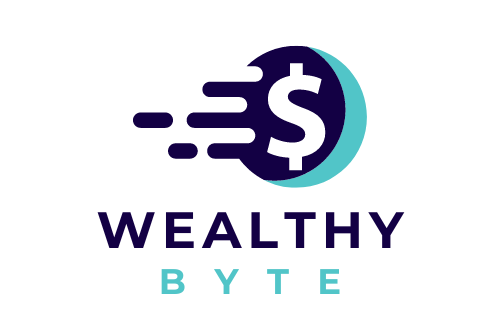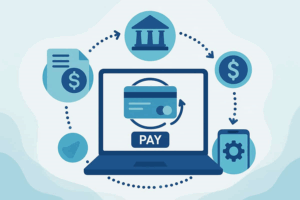Have you ever wondered whether you’re truly ready to buy a home, or do you still have some questions about how home financing actually works? If so, you’re not alone. Home financing is often confusing, especially for first-time buyers. There are plenty of myths floating around about what you need, what lenders look for, and what it takes to get the keys to your dream house. These misconceptions can be discouraging or even misleading, leaving many potential homeowners feeling overwhelmed.
In this blog, we will share some of the most common misunderstandings about home financing. We’ll break down these myths so you can feel informed, prepared, and confident as you plan for your future home.
The Interest Rate Is the Same as the APR
One of the biggest misconceptions about home financing is that the interest rate on a loan is the same as the APR (Annual Percentage Rate). This is not quite accurate. While they are related, they serve different purposes when it comes to home financing. The interest rate represents the cost of borrowing the money—what the lender charges you for the loan. On the other hand, the APR includes both the interest rate and additional costs, like origination fees or closing costs.
When shopping for a home loan, you may notice that the mortgage rates you see advertised are lower than the APR. This happens because the interest rate doesn’t account for all the extra fees involved. Understanding the difference between these two figures helps you compare loans more effectively, ensuring you know the full cost of borrowing rather than just focusing on the rate itself.
You Need a 20% Down Payment to Purchase a Home
Another misconception is the idea that you need a 20% down payment to buy a house. While it’s true that putting down 20% has its advantages, it is by no means a strict requirement. Today, many loan programs allow buyers to put down much less—sometimes as little as 3%. Government-backed loans like FHA loans are a good example, offering lower down payment options.

A smaller down payment can make homeownership more accessible. It means you don’t need to save up for years before buying your first home. However, keep in mind that a lower down payment may require you to pay for private mortgage insurance (PMI), which adds to your monthly costs. But if a lower upfront payment makes it easier to enter the market, it could still be a great choice for you.
You Need Perfect Credit to Get Approved
Many people think that only those with perfect credit scores can qualify for a home loan. In reality, you do not need a perfect credit score to get approved. While having a high credit score can help you secure better rates, it’s not the only factor lenders consider. Lenders also look at your income, employment history, debt-to-income ratio, and other financial details.
If your credit score isn’t perfect, you may still qualify for a loan—perhaps at a slightly higher rate. Improving your credit score is always a good idea, but waiting for it to become perfect before applying for a loan could hold you back unnecessarily. You might already be in a position to get approved, and understanding this can help you take that next step toward homeownership sooner.
All Loans Require PMI
Another misunderstanding is that all loans require private mortgage insurance (PMI). This belief likely stems from confusion around what PMI is and when it’s needed. PMI is typically required if you put down less than 20% of the home’s value. It protects the lender in case you default on your loan, but not all loans require PMI.
For instance, if you have a conventional loan with a down payment of 20% or more, PMI is not required. Some government-backed loans, like VA loans for veterans, also don’t require PMI, regardless of the down payment. Knowing that PMI is not always a given can help you plan better and understand your financing options more thoroughly.
The Pre-Approval Amount Is How Much You Should Spend
Being pre-approved for a home loan is an exciting step, but it’s important to understand what that number actually represents. Many people believe that if a lender pre-approves them for a certain amount, they should spend all of it. This is not always the best approach, though. The pre-approval amount is simply the maximum that the lender thinks you can afford based on your financial information.
Just because you can technically afford a larger loan doesn’t mean it’s the right financial move for you. You’ll want to consider your monthly expenses, lifestyle, and future plans. Choosing a loan that leaves you with a manageable monthly payment can provide you with more financial flexibility rather than being stretched thin by a high mortgage payment.
Renting Is Always Affordable Than Purchasing
A lot of people believe that renting is always more affordable than buying, but this is not always true. Renting may seem cheaper on a month-to-month basis, but buying can offer long-term financial benefits, including building equity over time. While it’s true that buying a home comes with upfront costs like a down payment and closing fees, over time, you’re investing in an asset that can appreciate in value.
Renting means you’re paying to live somewhere, but you don’t gain any financial benefit from those monthly payments. Homeownership can also provide stability, as you’re not subject to rent increases, and you get the satisfaction of having a place to call your own. Comparing the long-term financial benefits of renting versus buying can help you decide which path is better for your goals.
In conclusion, misconceptions about home financing can make the entire process seem overwhelming and out of reach. But as you can see, many of these myths are just that—misconceptions. By understanding the realities of home loans, you can better prepare yourself and make decisions that align with your needs and circumstances. Owning a home is not just about the finances; it’s about creating a space where you feel secure and comfortable.

















